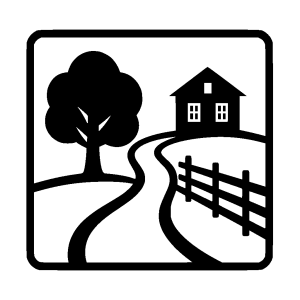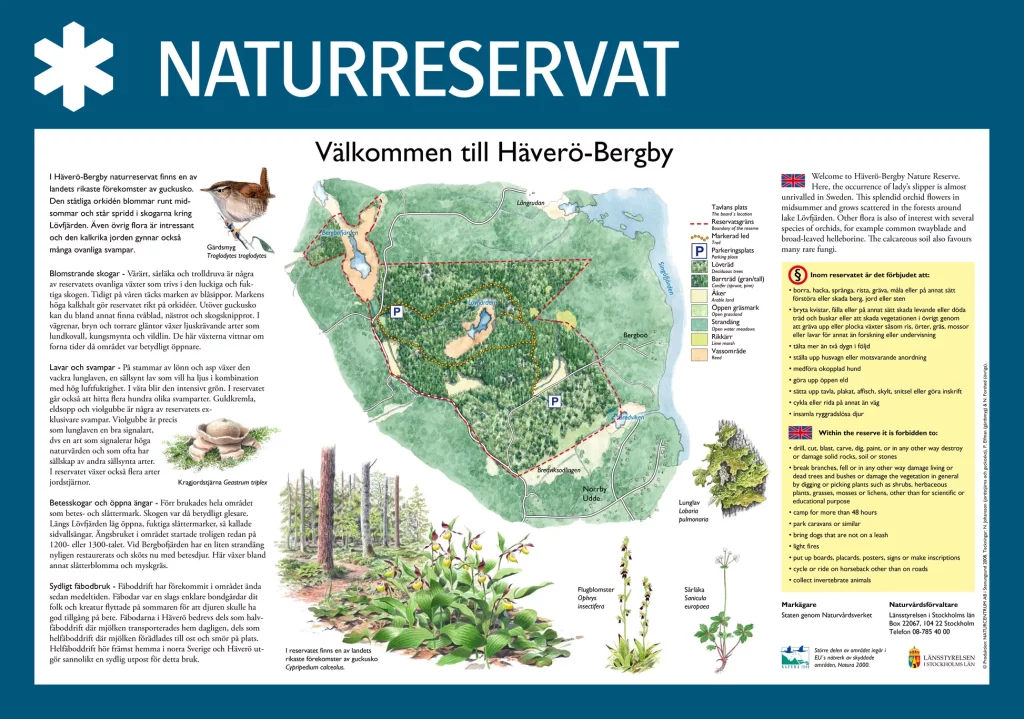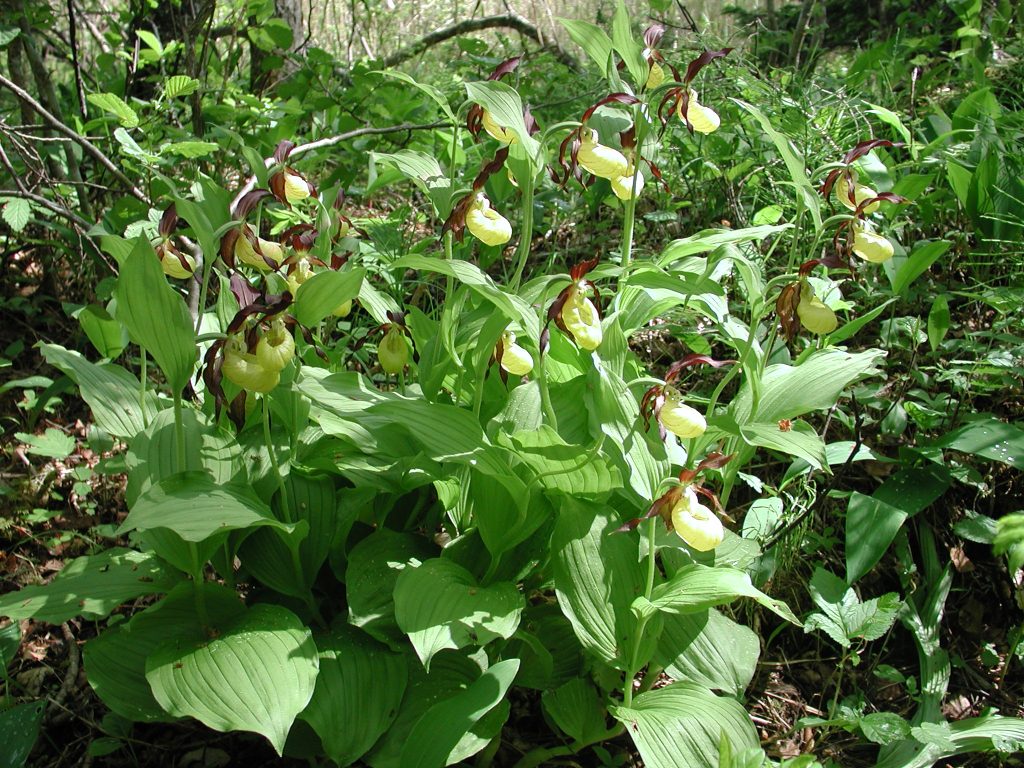
32. Häverö-Bergby nature reserve
County Administrative Board sign
See: County Administrative Board Stockholm – Häverö-Bergby Nature Reserve & Naturkartan Häverö-Bergby

Transcribed and translated text:
NATURE RESERVE
Welcome to Häverö-Bergby
In the Häverö-Bergby nature reserve there is one of the country’s richest occurrences of the guckosko. The stately orchid blooms around midsummer and is scattered in the forests around Lövfjärden. Other flora is also interesting and the lime-rich soil also supports many unusual fungi.
Flowering forests – Spring vetchling (Lathyrus vernus), European sanicle (Sanicula europaea), and baneberry (Actaea spicata) are some of the reserve’s unusual plants that thrive in the open and moist forest. Early in the spring, the ground is covered with liverwort (Hepatica nobilis). The high calcium content of the soil makes the reserve rich in orchids. In addition to yellow lady’s slipper (Cypripedium calceolus), you can find common twayblade (Neottia ovata), bird’s-nest orchid (Neottia nidus-avis) and broad-leaved helleborine (Epipactis helleborine), among other things. Light-demanding species such as wood cow-wheat (Melampyrum nemorosum), wild marjoram (Origanum vulgare) and fairy flax (Linum catharticum) grow on roadsides, verges and drier clearings. These plants bear witness to ancient times when the area was much more open.
Lichens and mushrooms – On the trunks of maple and aspen grows the beautiful lung lichen (Lobaria pulmonaria), a rare lichen that needs light in combination with high humidity. When wet, it turns intensely green. Several hundred different species of mushrooms can also be found in the reserve. Gilded brittlegill (Russula aurea), lurid bolete (Suillellus luridus) and pig’s ear (Gomphus clavatus) are some of the reserve’s more exclusive mushrooms. Pig’s ear is, just like lung lichen, a good signal species, i.e. a species that signals high natural values and is often accompanied by other rare species. Several species of earthstars (Geastrum) also grow in the reserve.
Pasture forests and open meadows – In the past, the entire area was used as pasture and hayfield. The forest was considerably sparser. Along Lövfjärden were open, moist hayfields, so-called sidewall meadows. Pasture farming in the area probably started as early as the 13th or 14th century. At Bergbofjärden, a small coastal meadow has recently been restored and is now managed with grazing animals. Among other things, grass-of-Parnassus (Parnassia palustris L.) and holy grass (Hierochloë) grow here.
Southern dairy farming – Dairy farming has existed in the area since the Middle Ages. Dairy farms were a type of simpler farmstead where people and livestock moved in the summer so that the animals would have good access to pasture. The dairy farms in Häverö were operated partly as semi-dairy farms where the milk was transported home daily, and partly as full-dairy farms where the milk was processed into cheese and butter on site. Full-dairy farming is mainly found in northern Sweden and Häverö is probably a southern outpost for this practice.
§ Within the reserve it is prohibited to:
- drilling, chopping, blasting, carving, digging, painting or otherwise destroying or damaging rock, soil or stone
- breaking branches, felling or otherwise damaging living or dead trees and shrubs or otherwise damaging vegetation by digging up or picking plants such as rice, herbs, grass, mosses or lichens for purposes other than research or teaching
- camping for more than two consecutive days
- to set up a caravan or similar device
- bring an untethered dog
- light an open fire
- put up a board, placard, poster, sign, carving or make an inscription
- cycling or riding on anything other than the road
- collect invertebrates
Landowner:
The State through the Swedish Environmental Protection Agency
Environmental protection manager:
Stockholm County Administrative Board, lansstyrelsen.se/stockholm
Most of the area is included in the EU’s network of protected areas, Natura 2000.
Extra material

